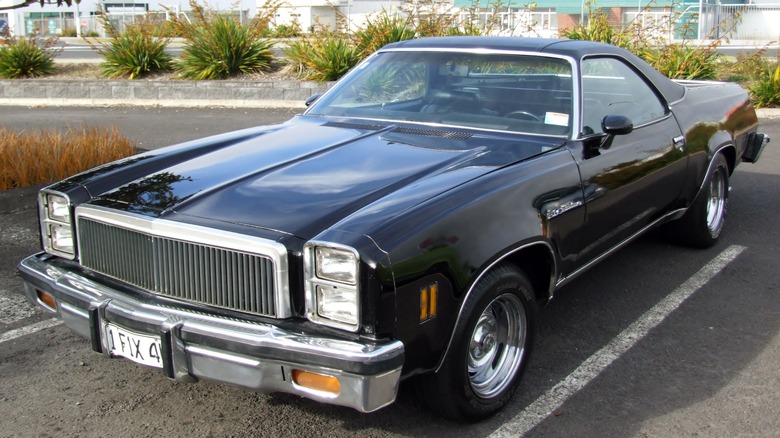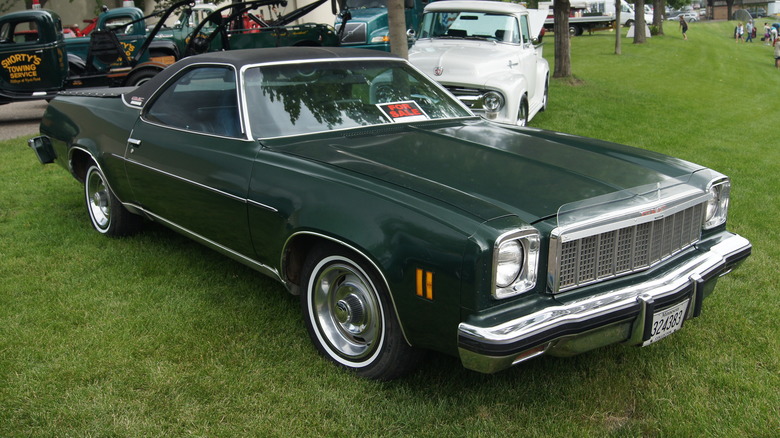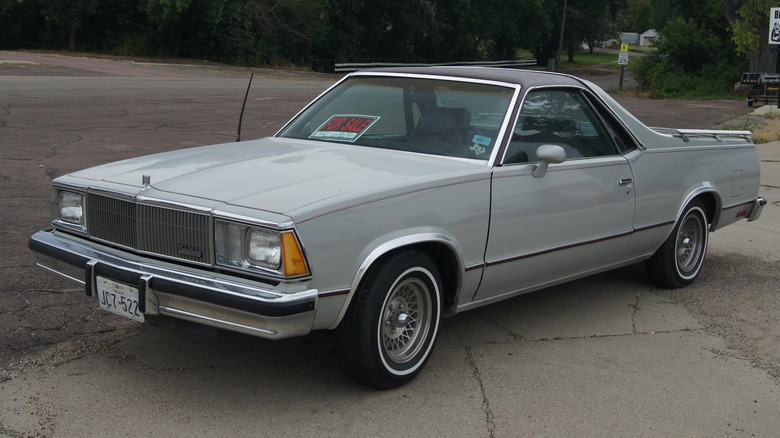What's The GMC Version Of An El Camino & Which Years Was It Made?
One of the most interesting vehicle designs to be produced is the utility sports coupe. These models blend the stylishness and performance of a sedan or muscle car with the practicality of a pickup by adding an open truck bed at the rear of the car. With the popularity of pickup trucks in the United States, you might think this design would be commonplace, but it is quite rare. One of the most popular utes in the United States was the Chevrolet El Camino. Throughout the 1960s, '70s, and most of the '80s, the El Camino sat right alongside the Ford Ranchero as the premier utility coupe in the U.S. Given its popularity and longevity, it makes sense that General Motors, which owns Chevrolet, would want to sell the El Camino under its other brands.
In 1971, General Motors debuted a variation of the Chevrolet El Camino called the GMC Sprint. This rebadging between Chevrolet and GMC is commonplace for the two companies, with today's most prominent example being the essentially identical Chevrolet Silverado and GMC Sierra 1500. However, there are still ways that the El Camino and the Sprint diverged, despite the latter being a rebadged version of the former. Let's look into the history of the GMC Sprint, what made it unique, and the name change midway through its run.
GMC Sprint first generation
The first time the GMC Sprint hit the market was in the 1971 model year, quite a bit after the introduction of the Chevrolet El Camino back in 1959. Both of them were built on the same 116-inch wheelbase, and they had the same basic styling as well, sharing the shape of the grille and the placement of company and model nameplates.
Both cars also had the same engine options, and there were a lot to choose from. The base engine was a 250-cubic inch inline-six that made a maximum of 145 gross horsepower and 230 lb-ft of net torque. That was the only six-cylinder engine available for the car; everything else was a V8. There were a handful of V8s that buyers could choose from ranging in size from 307 to 454 cubic inches, giving drivers a maximum output of 425 horsepower and 275 pound-feet of torque. In the case of the El Camino, those upper-tier engines were only available with the SS — or Super Sport — badge. GMC called the high-performance version of the Sprint the SP.
For the 1973 model year, the Sprint was redesigned, along with the El Camino. The same thing happened again for the 1978 model year, but this time, the Sprint got a new name.
The Sprint became the GMC Caballero in 1978
General Motors originally used the name Caballero back in the late 1950s for a completely different company, Buick. This was a designation for Buick's most luxurious station wagons, but it had lain dormant for years until the company decided to revive the nameplate for the new second-generation Sprint. From that time to the model's demise, it was known as the GMC Caballero. GM did not officially disclose why it made the name change, but it's possible that GMC may have used the Spanish word for "gentleman" to more closely align its utility coupe with the El Camino ("the road" or "the way").
Despite the new name, the Caballero was still very much in sync with what Chevy was doing with the El Camino. From 1978 onward, the two cars had three trims apiece with similar naming techniques. The GMC Caballero was the name of the standard trim, and the other two were the Laredo and the Diablo ("devil"). The Chevy version had the standard El Camino, the SS, and the Conquista ("conquest"). The number of engine offerings also shrank dramatically in the era of stricter emissions and fuel economy standards, but the GM cousins shared the same options. The GMC Caballero and the Chevrolet El Camino may not have entered the market at the same time, but they did leave it together, as declining sales put the Caballero next to the El Camino on the chopping block after the 1987 model year.


